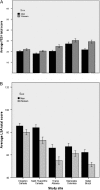Fear of falling and its association with life-space mobility of older adults: a cross-sectional analysis using data from five international sites
- PMID: 28043980
- PMCID: PMC5405754
- DOI: 10.1093/ageing/afw239
Fear of falling and its association with life-space mobility of older adults: a cross-sectional analysis using data from five international sites
Abstract
Background: fear of falling (FOF) is a major health concern among community-dwelling older adults that could restrict mobility.
Objective: to examine the association of FOF with life-space mobility (i.e. the spatial area a person moves through in daily life) of community-dwelling older adults from five diverse sites.
Methods: in total, 1,841 older adults (65-74 years) were recruited from Kingston, Canada; Saint-Hyacinthe, Canada; Tirana, Albania; Manizales, Colombia and Natal, Brazil. FOF was assessed using the Fall Efficacy Scale-International (FES-I total score), and the life space was quantified using the Life-Space Assessment (LSA), a scale that runs from 0 (minimum life space) to 120 (maximum life space).
Results: the overall average LSA total score was 68.7 (SD: 21.2). Multiple-linear regression analysis demonstrated a significant relationship of FOF with life-space mobility, even after adjusting for functional, clinical and sociodemographic confounders (B = -0.15, 95% confidence interval (CI) -0.26 to -0.04). The FOF × site interaction term was significant with a stronger linear relationship found in the Canadian sites and Tirana compared with the South American sites. After adjusting for all confounders, the association between FOF with LSA remained significant at Kingston (B = -0.32, 95% CI -0.62 to -0.01), Saint-Hyacinthe (B = -0.81, 95% CI -1.31 to -0.32) and Tirana (B = -0.57, 95% CI -0.89 to -0.24).
Conclusion: FOF is an important psychological factor that is associated with reduction in life space of older adults in different social and cultural contexts, and the strength of this association is site specific. Addressing FOF among older adults would help improve their mobility in local communities, which in turn would improve social participation and health-related quality of life.
Keywords: community mobility; falls efficacy; fear of falling; international; life-space mobility; older people; site-related differences; study.
© The Author 2017. Published by Oxford University Press on behalf of the British Geriatrics Society.All rights reserved. For permissions, please email: journals.permissions@oup.com
Figures
References
-
- Tinetti M.E., Powell L. Fear of falling and low self-efficacy: a cause of dependence in elderly persons. J Gerontol 1993; 48:35–8. - PubMed
-
- Scheffer A. C., Schuurmans M. J., van Dijk N., van der Hooft T., de Rooij S. E.. Fear of falling: measurement strategy, prevalence, risk factors and consequences among older persons. Age Ageing 2008; 37(1):19–24. - PubMed
-
- Vellas B., Wayne S., Romero L., Baumgartner R., Garry P.. Fear of falling and restriction of mobility in elderly fallers. Age Ageing 1997; 26(3):189–93. - PubMed
-
- Viljanen A., Kulmala J., Rantakokko M., Koskenvuo M., Kaprio J., Rantanen T.. Fear of Falling and Coexisting Sensory Difficulties As Predictors of Mobility Decline in Older Women. J Gerontol Ser A: Biol Sci Med Sci 2012; 67(11):1230–7. - PubMed
-
- Donoghue O. A., Cronin H., Savva G. M., O'Regan C., Kenny R. A.. Effects of fear of falling and activity restriction on normal and dual task walking in community dwelling older adults. Gait Posture 2013; 38(1):120–4. - PubMed
Publication types
MeSH terms
Grants and funding
LinkOut - more resources
Full Text Sources
Other Literature Sources
Medical
Miscellaneous


